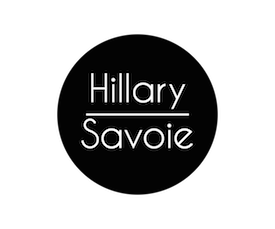Sitting in a bar in Washington D.C., a hard cider in my hand, I find myself venturing into the whimsical place I go sometimes when my attempts at understanding science bump up against the love, joy, and hope I feel in thinking about my daughter. I’m here in DC for the American Epilepsy Society conference, where the organization I founded, The Cute Syndrome Foundation, holds our annual meeting for clinicians, researchers, and families in the SCN8A mutation community. These meetings typically land me in just such a place dancing between the excitement of knowing how the science is advancing, the pride I feel in our SCN8A community’s coherence, and the confusion of knowing that my daughter both is, and isn’t, truly a part of the SCN8A community.
I revel in hearing researchers over drinks, casually explaining the theories of how mutations in SCN8A alter sodium channel function or how a particular drug therapy might work or what they are doing in their labs. I listen, squeezing my eyes shut a bit trying to create an image in my head of what that might look like—trying to piece together the bits and pieces into a model I can understand—trying to understand the meaning behind the lexicon that feels almost familiar now, but isn’t quite my own. And when the science spills over the edges of my understanding, I listen, instead, to the passion and excitement behind the words, because, in the end, that is the language we share.
Later in the evening, though, I will admit that I understand this work cannot help Esmé. I will say that I have lost every ounce of faith that anyone will ever be able to tell me the truth of her four genetic mutations. When I say it, I will know how deeply I am carrying that loss of faith. I will feel how I find it at once completely heart-breaking, terribly frustrating, and entrancingly poetic. And, even so, knowing all of this, I will still want to return there, to these discussions I’d dreamed of having to help Esmé, that now I dream will help other children I love.
***
Esmé is in my cousin’s arms. It is still an odd experience to see her held by someone who doesn’t do so every day. Esmé’s lanky limbs, twisting quickly at impossible angles, her body moving in surprising ways makes holding her feel like hanging on to an octopus. My own body is weirdly braced to run over and catch her. But I don’t need to…they are perfectly comfortable in their own little world, laughing about something.
They belong to each other. They are family, in a way that so rarely comes to Esmé: fearlessly close.
***
Standing in the front of the room, at the Hole in the Wall Gang Camp in Connecticut, it seems like there are more than 300 or so people I was prepared for. It could be a 1000 for all I know. I will tell this crowd of people, who here to support one of my favorite places in the world, about what this place has done for Esmé, for my family. Up here, at the podium, I am in the room, but also, I am not a part of it. I am before it.
I am nervous—and afraid that I will start crying and be unable to stop. That is a reasonable fear when I stand up to tell the story of my daughter—because with my words I will walk along a narrow and low peninsula I’ve built up into the center of the lake of things I feel about Esmé. The truth is that it is only in skirting across the surface of that lake of emotions, it is only in threatening to fall in, that I can truly express why having Camp is so deeply important to families like mine…that I can tell them to open their hearts, and their checkbooks, for this place.
And so I speak about a camp envisioned 30 years ago for children very different from my own—a camp that is now reaching out more and more to the rare disease population, to children like Esmé who seem not to belong almost anywhere. As I talk, I explain that it is by the force of everyone deciding Esmé belongs at Camp, that she does. I explain that she, in turn, chooses this place to belong, to spread her wings.

***
The child, tiny and unsteady, runs. His mother watches from a distance. I have to look away. It isn’t jealousy that causes this involuntary movement, so much as it is anxious confusion about the mechanics of it all.
I turn, instead, to watch my daughter’s motion—motion that inspires pitying smiles and outright stares so often now. Esmé proudly propels herself forward in the open space of the mall. She can get up quite a bit of speed now. And I am so proud of her, so thrilled to see her rolling away from me. Across the lobby, I can feel my daughter’s elation, even as she stretches the invisible tether that holds us together.
***
Leaning over my computer, I try to find the words to explain Esmé’s relationship with The Muppets, and, in particular, Walter. I have the chance to explain the depths of Esmé’s love for Walter to someone who helped make Esmé’s favorite movie and her dearest love come to life. As I type the words, I can feel my eyes well up. And, so I know it is true:
“Esmé and I can sometimes have conversations—using her word cards. We’ve talked about it, and I have come to understand that she is in love with Walter. I think that she feels like him a lot—like the world wasn’t exactly made for her. And I think she is waiting for her moment to show the world who she is. (I believe, with all my heart, she has many such moments in her future.) I know, from talking to her, that she knows she is very different…and that she finds it frustrating. Sometimes I think she may wonder if she is a Muppet.”
My daughter thinks she is a Muppet. I am rather certain of that now. I see it as she watches The Muppets for the millionth time, her face pressed hard against the screen of her iPad, her lips moving constantly. I don’t know if she is reciting the words back or speaking to the characters.
Something tells me that she is speaking to them…and that they are answering her back.
This has been a Finish the Sentence Friday post.
The host of Finish the Sentence Friday, as always, is Kristi from Finding Ninee. And I am thrilled to be acting as her co-host today!
Finish the Sentence Friday is a link-up where writers and bloggers come together to share their themselves with a particular sentence. If you’d like to stay ahead of future sentences and participate, join our Facebook group.



You did such an amazing job in your speech, and in this, that you said you’d “phoned into.” I feel this with all of me, and teared up, and my only regret is that in your speech, as you look toward the screen that was in the room, I couldn’t see what you saw – Esme crawling toward her future. I also love “my daughter is a muppet” but not because of that line. I love it because I see you seeing her, talking to the screen, and knowing her in a way that’s beautiful and pure. Thank you for being my co-host.
Thank you too, for your words.
This is just beautiful all around but I love that she thinks she is a Muppet and in love with Walter. Having had to watch this movie (and listen to the sound track in the car) dozens and dozens of times, I can see that.
Thank you for co-hosting with Kristi, this most engaging of FTSF ‘hops. This week’s collection has, imo, been a standout week in terms of eloquence and a certain engaging quality to the story (that most of the writers) provide. The irony is not lost on myself, the degree of my own identification with the others this week.
I love all of the #Truth you have shared here. Hard Truth and soft truth, too. In my family, we understand and relate to the Muppets, as well. I want to say more, but it would never be enough. I just love that you have shared these words is all.
Wow. You are so well spoken and engaging. I have actually used the Muppet reference with my kids multiple times. And I’ve always called them Doozers.. doing what Doozers do. (from Fraggle Rock)
Wish I could have seen the images. Even without seeing them, this is so incredibly beautiful. Blessings.
Thank you Hope! I added in the one of her in the hallway 🙂